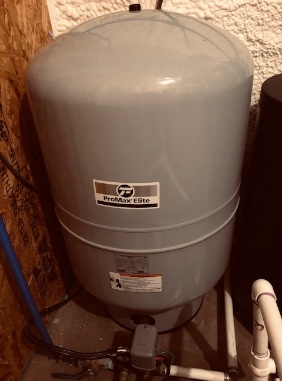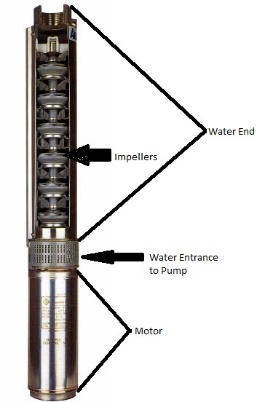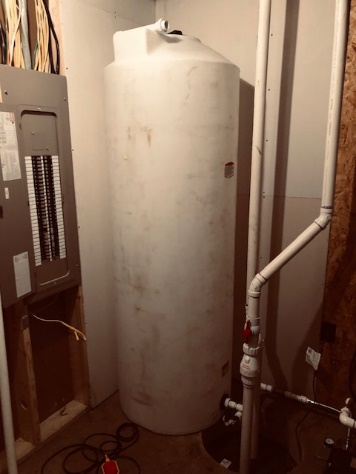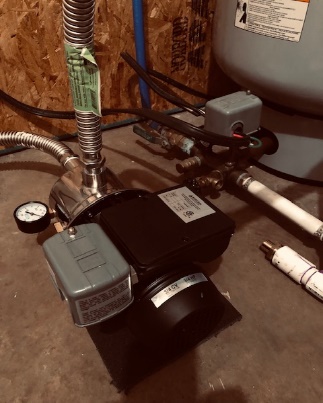
Many on the Mountain have installed secondary fresh water storage tanks on their property. Let’s examine why a secondary water storage tank may be good for you.
First, a little instruction… If you don’t have a secondary fresh water tank, what do you have? You have an in-ground well pump that pumps water into an often blue or gray “pressure tank” in your basement or garage. Residential pressure tanks come in 5 or so sizes (roughly 20, 30, 50, 60, and 80 gallons), but that’s a bit deceiving. A general guideline is that only about 1/3 of that pressure tank holds water, and the rest is air. That pressurized air is what pushes water up into your sinks and showers. For example, my tank is the 52-gallon one shown in the picture, but it only stores 14 gallons of water without having to demand more water from the well pump in the ground.
Storage tanks are used for at least three reasons: to accommodate wells that refill too slowly; to store extra water in case of well pump failure; and, to reduce wear and tear on the well pump. Mostly, Nancy and I wanted less well pump wear. I first estimated how much water Nancy and I use? If we’re average, we use roughly 60 gallons per person per day for the tap, toilet, dishwasher, laundry, etc. For the two of us, that’s 120 gallons per day. Since our pressure tank only holds 14 gallons, our well pump comes on roughly 8 or so times a day. Coming on that many times a day is a lot of wear on the pump. Let’s explore why…

Wear of your in-ground well pump is somewhat (and perhaps) mainly due to “torque”. Torque is the start-up spinning action of the pump when the house demands water. There’s a series of blades called impellers in your well pump (shown at the top of the picture). Those blades have to get spinning to push the water up to the surface. And it may be a long way up – my well is 680 feet to the pump. To get started, the blades must push against the water. That is wear and tear on your pump. So, if the pump starting and stopping causes wear, how can we minimize turning it on and off so often? How can I reduce the starting and stopping of my own pump from eight times a day to, say, one time a day? Introducing “Secondary Fresh Water Storage.”

Secondary fresh water storage works like this… The in-ground well pump pumps fresh well water into a storage tank like the one in the picture. That storage tank can be small, say, 250 gallons of fresh water, or large and buried, holding 1500 gallons or more.

When your pressure tank (holding only, say, 14 gallons) needs water, instead of turning on the well pump, it turns on a less-expensive secondary pump (see picture) and gets the required water from the storage tank instead of the well. My tank is 250 gallons, enough for the two of us to enjoy fresh water for at least a day. It turns on the well-pump once daily when the storage tank requires a refill. A secondary advantage of the storage tank is that we have stored fresh water, even without the well-pump working. The secondary house pump may turn on eight or so times to feed the pressure tank, but it’s on the basement floor and would not cost $6500 or so to replace as the well pump would.
Let me know if you’re interested in my setup or talking about this.
Charles Caldwell
[email protected] or on Facebook




